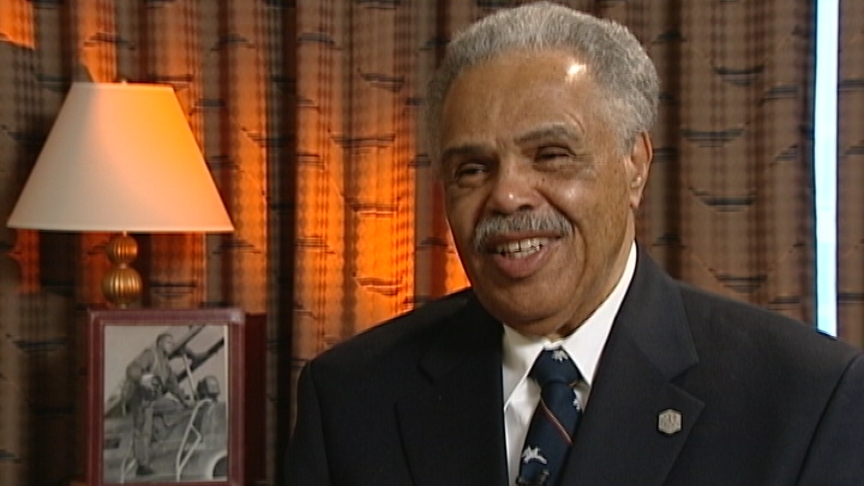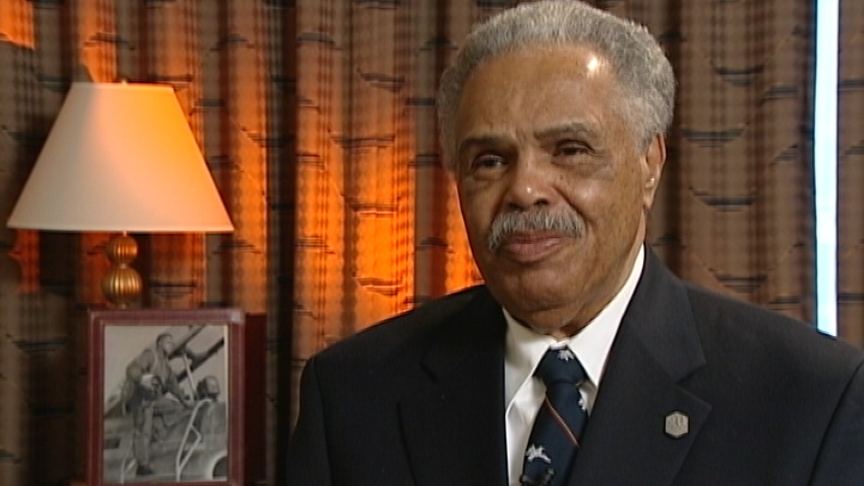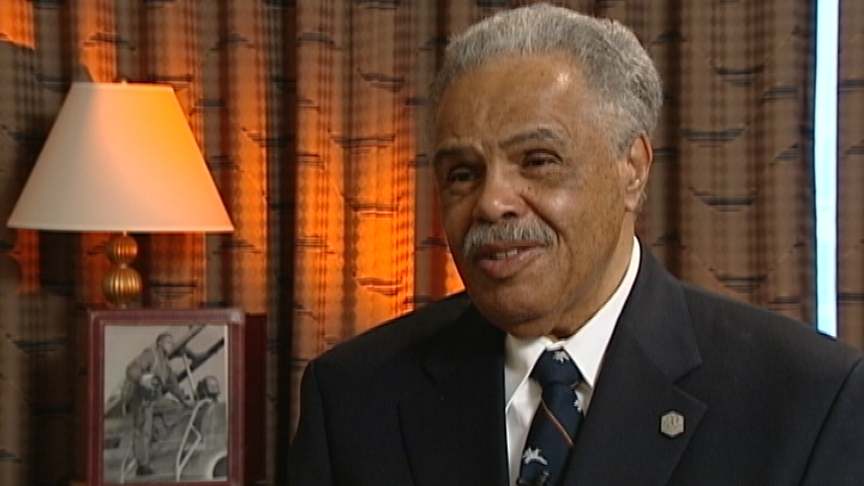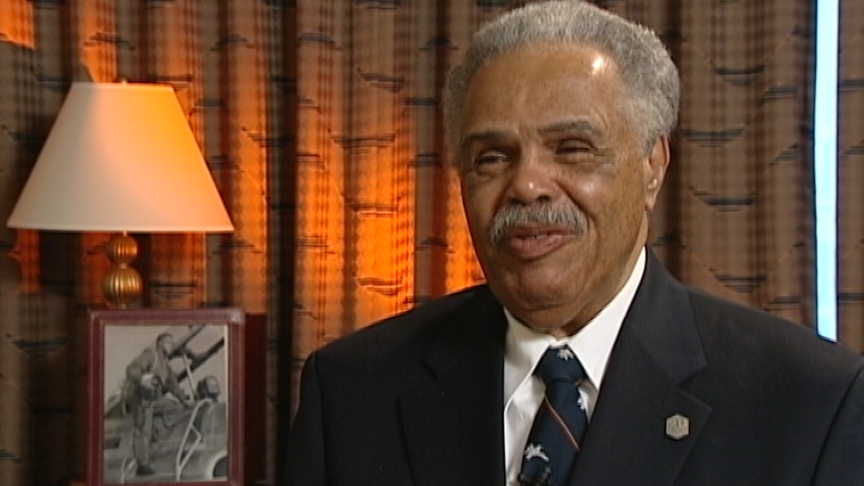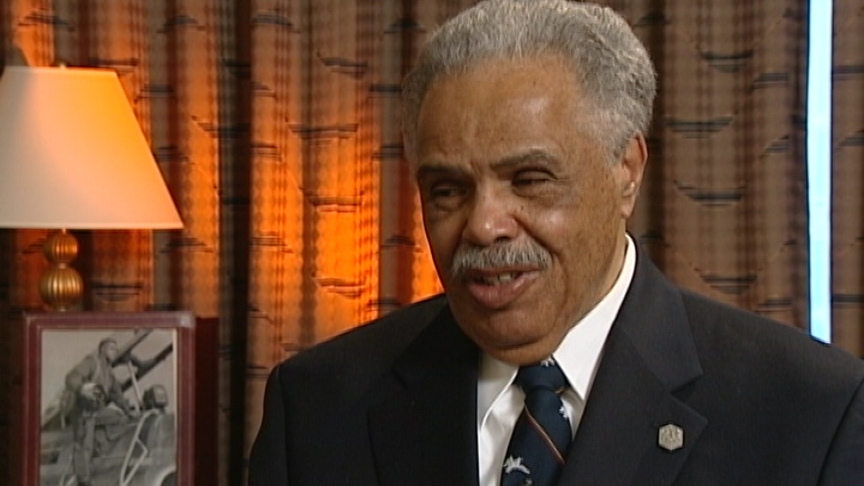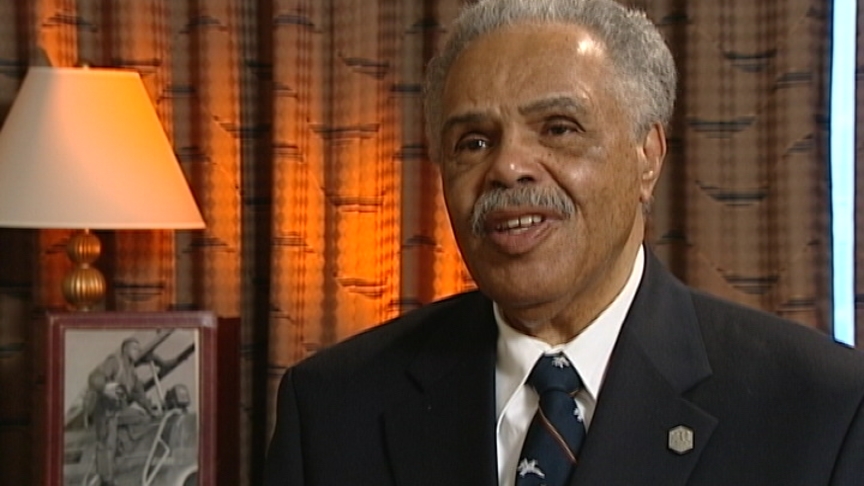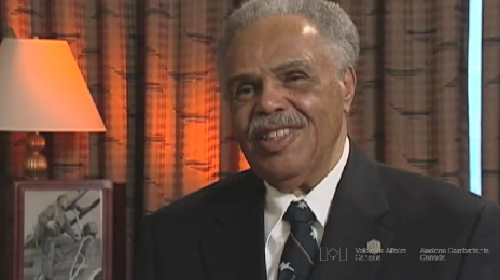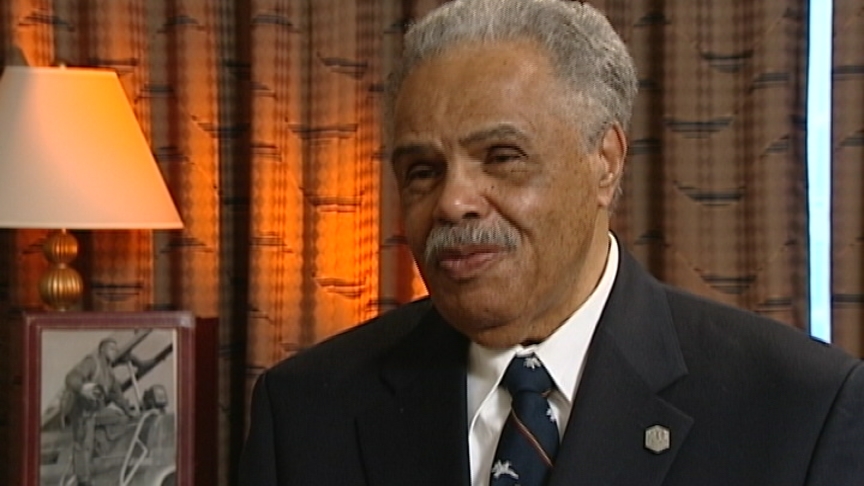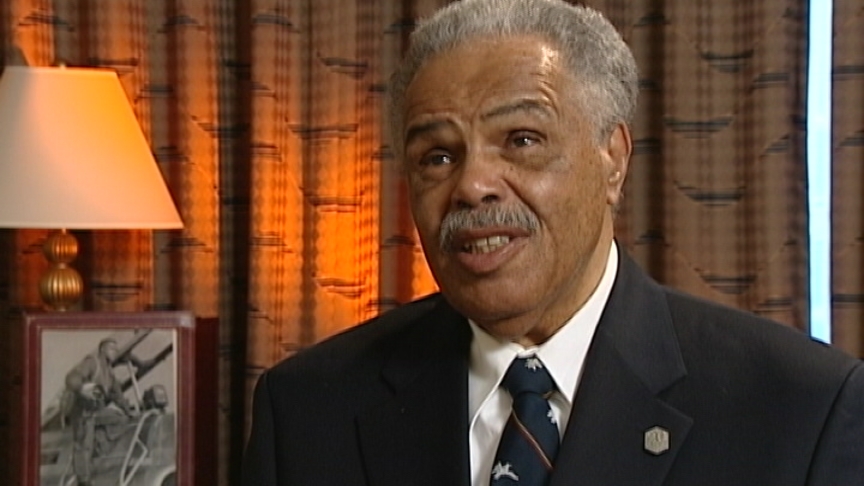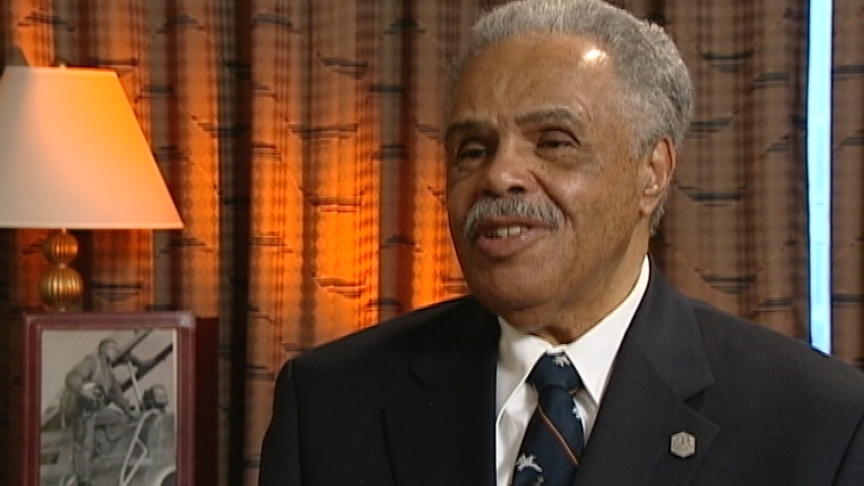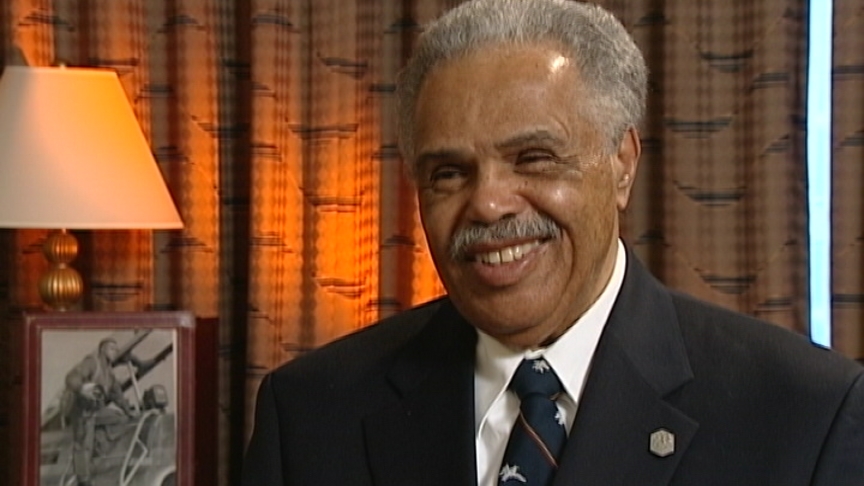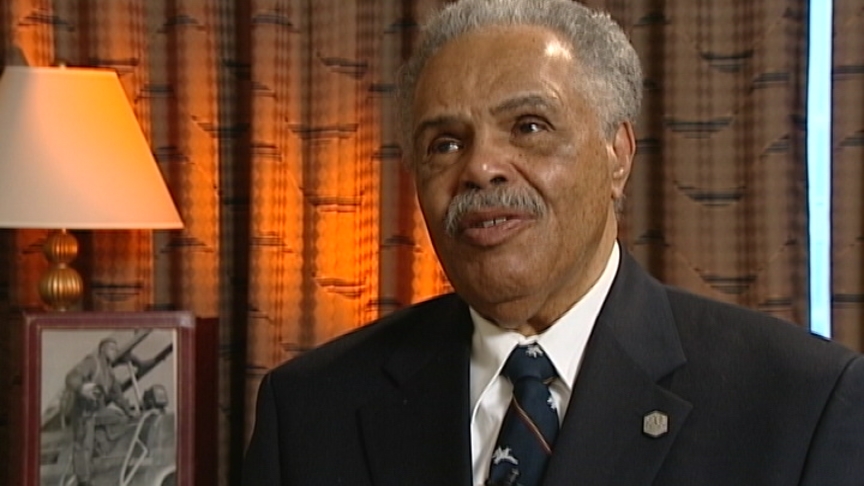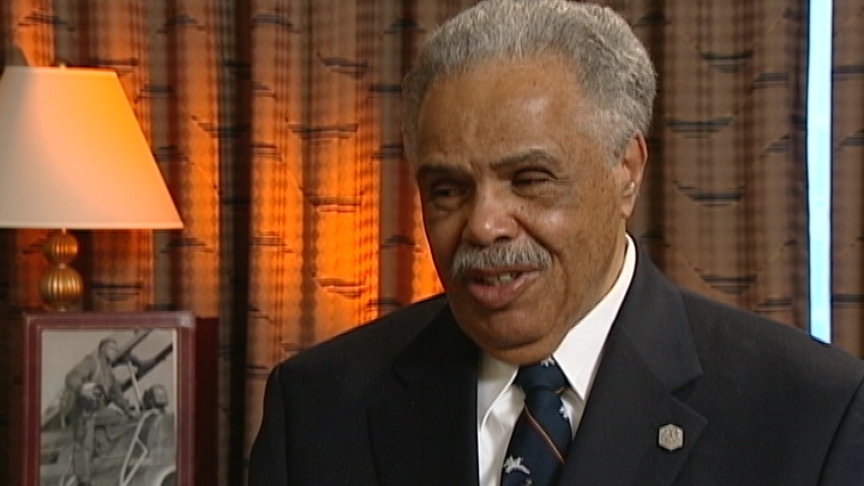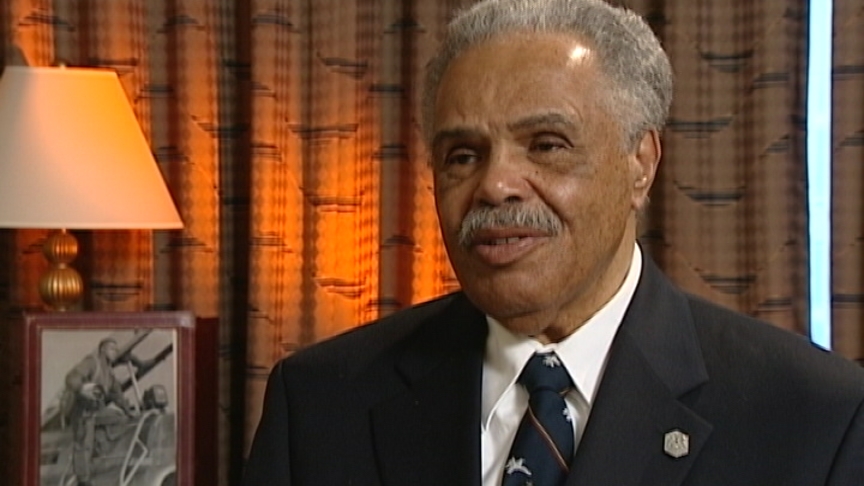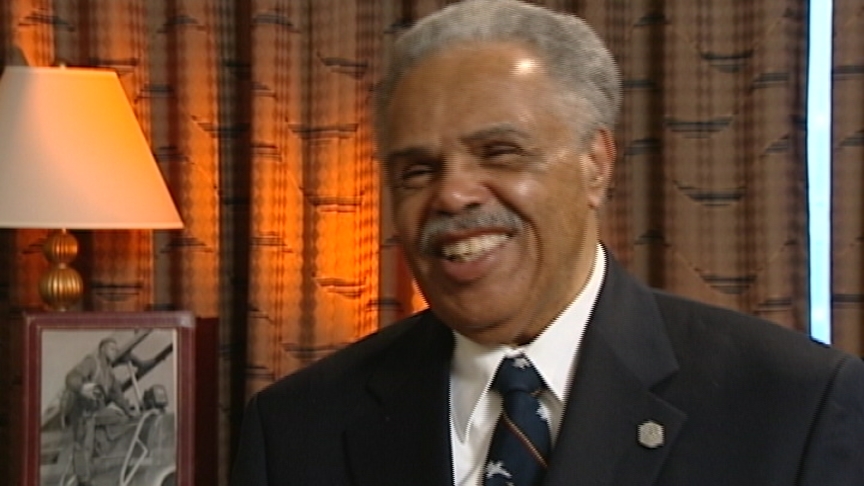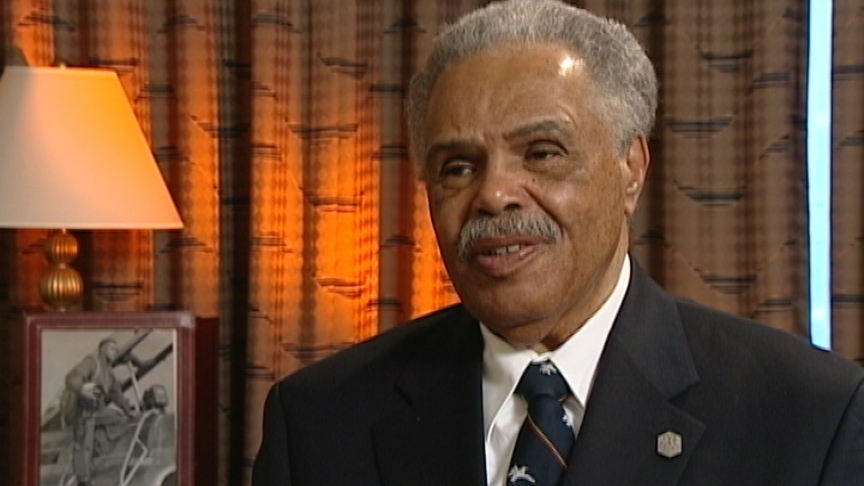Normally when you're flying the air plane
you fly with outside references.
You can see the horizon.
You can see what's up, what's down.
You can see when the air plane are, when the wings
aren't level, at (inaudible) or what have you.
With instrument flying you sit in the back,
there's a hood that encloses the whole area so that
you cannot see out and the only references
that you have to keep the air plane straight and
level are the instruments in the cockpit.
You have what's called an artificial horizon and
you have a turning bank indicator. You have an air speed.
You have a compass and instruments like that and
then you have some navigation instruments.
So you had to learn to fly the aircraft with reference
to those instruments. And this required that you develop
what's known as a cross check where you could
not get fixation on an instrument.
You couldn't look at the artificial horizon,
for example, and not check the air speed or
check the compass because you
wouldn't know whether or not you
were turning off heading or whether you
were losing your air speed and so on.
It's known, a proven fact, in civilian aviation
that for those people who have never had
instrument flight training,
if they get into cloud where they can't see the
horizon, they will be out of control.
The air plane will be out of control within 30 seconds.
And you've heard of people who inadvertently got into
what they call instrument flight weather and
they just lose control of the air plane because you don't
know whether you're up, down, going straight up or straight down
and very quickly, because if you're not an instrument pilot,
you don't have a cross check.
So you start to fixate on one thing to the exclusion of the
others and that would really get you into trouble.
So you would get under the hood and just after take off,
initially after take off the instructor would raise the
gear in the first couple of trips.
As you progressed just after the air plane was off the ground,
he would say, “You have control,” and it was yours.
You selected the gear up, you selected the flaps up,
made sure that you didn't hit the ground again because
he was giving you control probably within 15-20 feet off the
ground. So a moment's lapse of looking for the gear
handle or something like that, you'd be back into the ground.
And I mean, that became very important
as we went on and later on we got onto
the operational flying squadrons, because they
were what's known as all weather squadrons.
You had to be able to take off no matter what the
weather was so you got to the point where
you were so proficient on instruments that the
weather could be zero-zero,
you could line the aircraft up on the runway,
making sure that it was on the centre line,
check the compass and fly it down on the compass
while you're still on the ground until you get air speed and
went airborne and never look outside
because there's nothing to see i f you're in a storm
or in fog or anything like that so that was,
the precursor was this instrument flying and
the proficiency that you had to develop in that.



